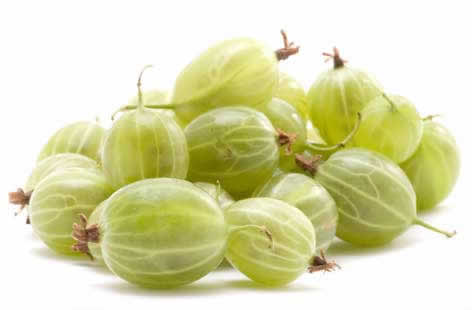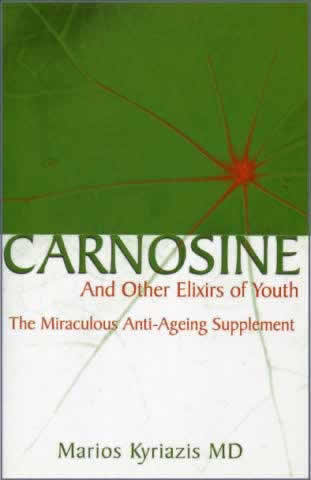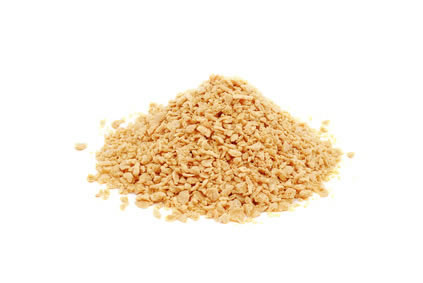Gooseberries are one of the 4 wild Ribes species growing in the Northern Hemisphere. The genus Ribes includes white and red currants, black currants, and gooseberries. The European gooseberry (Ribes grossularia) is native to Caucausus Mountains and North Africa region, while the American gooseberry (Ribes hirtellum) is native to northeastern and north central United States and Canada. European gooseberries typical dimension is approximately 1 inch length. Colors consist of white, yellow, red as well as purple shades. The American gooseberry (Ribes hirtellum), a hybrid species, is 3 to 4 feet high. The tart, rounded berries are slightly smaller than cherries and may be red, green, purple, white, or yellow. Indian gooseberries (Phyllanthus emblica) known as amla in the subcontinent belongs to different family of Euphorbiaceae.
Gooseberry Benefits
Gooseberries (Ribes grossularia) are an important source of vitamin A, vitamin B, vitamin C, potassium, phosphorus and iron. Consumption of berries from sources including the genus Ribes has been associated with positive health effects. Gooseberries are especially high in vitamin C and the group of antioxidants known as anthocyanins. Have been shown to help decrease the signs of aging, particularly with the high amounts of antioxidants in the darker red and purple varieties.
Vitamin C is critical for many basic processes in the body. Vitamin C is important for bones and connective tissues, Acerolamuscles, immune system and blood vessels. Vitamin C is a strong antioxidant. Antioxidants block some of the damage caused by free radicals, substances that damage DNA. Antioxidant properties of vitamin C have been demonstrated in many experiments in vitro. The role of vitamin C in the functioning of immune cells is well proven. Vitamin C has been shown to stimulate both the production and function of leukocytes, particularly neutrophils, lymphocytes and phagocytes.
 Anthocyanins may help prevent cardiovascular disorders, inflammatory responses, cancer, and degenerative diseases. Anthocyanins also improve neuronal and cognitive brain functions, ocular health as well as protect genomic DNA integrity. In recent years, numerous publications have demonstrated that besides their in vitro antioxidant capacity, certain phenolic compounds, such as anthocyanins, proanthocyanidins, and other flavonoids, may regulate different signaling pathways involved in cell survival, growth and differentiation.
Anthocyanins may help prevent cardiovascular disorders, inflammatory responses, cancer, and degenerative diseases. Anthocyanins also improve neuronal and cognitive brain functions, ocular health as well as protect genomic DNA integrity. In recent years, numerous publications have demonstrated that besides their in vitro antioxidant capacity, certain phenolic compounds, such as anthocyanins, proanthocyanidins, and other flavonoids, may regulate different signaling pathways involved in cell survival, growth and differentiation.
Other significant component of gooseberries is potassium. Potassium is an electrolyte that is necessary to electrical reaction in your body, including heart. A diet too high in salt and too inadequate in potassium doubles the risk of death from heart disease, according to a “Center for Disease Control” study led by researcher Elena V. Kuklina. Patients hospitalized after a heart attack who had blood potassium rates of between 3.5 and less than 4.5 mEq/L had a lower risk of death than patients with potassium rates that were higher or lower than this range, according to a research in the January edition of “JAMA”.
Ribes grossularia are a important source of soluble fiber. A single serving of fresh gooseberries includes approximately 6.5g of soluble fiber. Fibers helps avoid constipation. Even more important, people with high intakes of dietary fiber appear to be at reduce risk for developing diabetes, hypertension, stroke, coronary heart disease, and some gastrointestinal diseases. (The recommended dietary fiber intakes for children and adults are 14 g/1000 kcal. That means a person who eats 2,500 calories each day should get at least 35 grams of fiber daily).
Indian Gooseberries
Phyllanthus emblica (Indian gooseberries) known as amla in the subcontinent belongs to different family of Euphorbiaceae. According to ayurvedic medicine, Emblica officinalis may be used as a rasayana to promote longevity, and has also been used to increase digestion, developed heart health, helps purify blood and stimulate hair growth. The effects of Indian gooseberry is attributed to its antioxidant constituents, such as vitamin C, polyphenols, tannins and flavonoids. Includes high levels of Vitamin C Amla helps in increasing the number of red blood cells in body. Lab tests demonstrated that every 100 grams of fresh fruit provides 470 – 680 mg of vitamin C. Vitamin C is a strong antioxidant.
Alongside its strong antioxidant activity, the fruit of Amla has been reported to possess immunomodulatory, chemopreventive, antimutagenic, antiproliferative and effects that are useful in the prevention and therapy of cancer. Amla was shown to decrease inflammation in laboratory experiments. Some studies found that 500 mg of Amla a day for three months lowered CRP (C-reactive protein) levels. Indian gooseberry extracts are powerful antioxidants and help prevent lipid peroxidation, which is a key step in arterial hardening and cardiovascular illness.
The presence of chromium helps to control the blood sugar level which is quite important in type 2 Diabetes (non- insulin-dependent diabetes mellitus). Regular use of Indian gooseberry helps in the secretion of insulin by stimulating the cells and reduces the blood sugar levels in patients with diabetes. Indian gooseberry is a herb used to alleviate gastric upset, including excess acidity in the stomach.queous and alcoholic extracts of Amla have shown protective and therapeutic activity in induced gastric ulcers in animal experiments.
 L-carnosine is an antioxidant which stabilizes and protects the cell membrane. Found in elevated concentrations in muscles and brain tissue, carnosine is backed by studies to support its capability to scavenge reactive oxygen species, which can lead to free radical damage. Carnosine has been shown to scavenge reactive oxygen species, as well as alpha-beta unsaturated aldehydes formed from peroxidation of cell membrane fatty acids during oxidative stress.
L-carnosine is an antioxidant which stabilizes and protects the cell membrane. Found in elevated concentrations in muscles and brain tissue, carnosine is backed by studies to support its capability to scavenge reactive oxygen species, which can lead to free radical damage. Carnosine has been shown to scavenge reactive oxygen species, as well as alpha-beta unsaturated aldehydes formed from peroxidation of cell membrane fatty acids during oxidative stress. It is considered a super fruit, including vitamin C, polyphenols, caratenoids, lycopene, lutein, cryptoxanthin, beta-carotene, potassium and manganese. Vitamin C contained in the guava is 4 times more than vitamin C contained in oranges. In laboratory experiments, extracts from apple guava leaves or bark are implicated in medicinal effects against bacterial infections, inflammation, pain and cancer.
It is considered a super fruit, including vitamin C, polyphenols, caratenoids, lycopene, lutein, cryptoxanthin, beta-carotene, potassium and manganese. Vitamin C contained in the guava is 4 times more than vitamin C contained in oranges. In laboratory experiments, extracts from apple guava leaves or bark are implicated in medicinal effects against bacterial infections, inflammation, pain and cancer. A critical factor in healthy brain and nerve transmissions is the presence of cellular substance named acetylcholine. Lecithin is used by the body to produce the neurotransmitter acetylcholine, helping to keep a limpid mind.
A critical factor in healthy brain and nerve transmissions is the presence of cellular substance named acetylcholine. Lecithin is used by the body to produce the neurotransmitter acetylcholine, helping to keep a limpid mind.